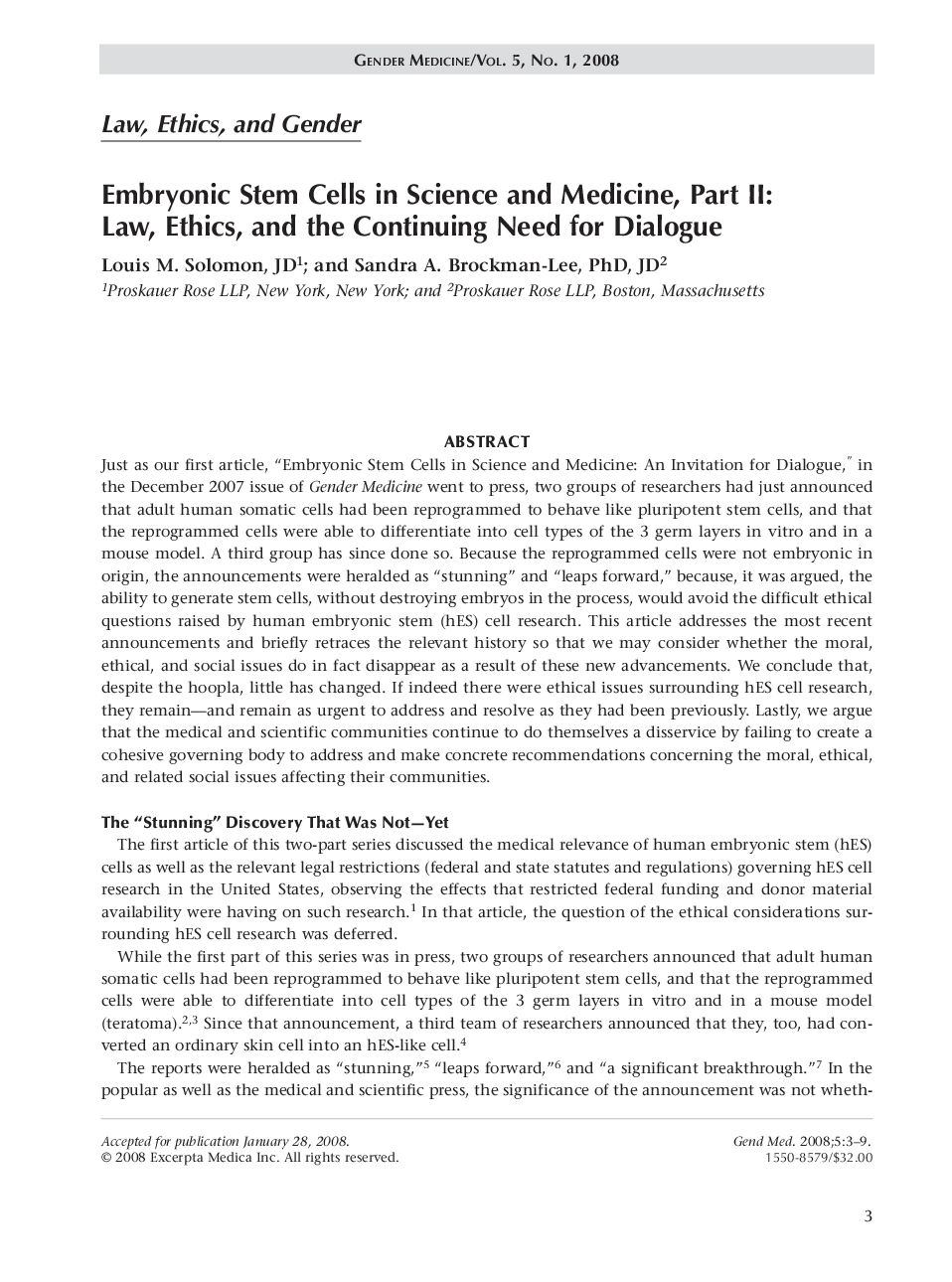| کد مقاله | کد نشریه | سال انتشار | مقاله انگلیسی | نسخه تمام متن |
|---|---|---|---|---|
| 2915894 | 1175599 | 2008 | 7 صفحه PDF | دانلود رایگان |

Just as our first article, “Embryonic Stem Cells in Science and Medicine: An Invitation for Dialogue,” in the December 2007 issue of Gender Medicine went to press, two groups of researchers had just announced that adult human somatic cells had been reprogrammed to behave like pluripotent stem cells, and that the reprogrammed cells were able to differentiate into cell types of the 3 germ layers in vitro and in a mouse model. A third group has since done so. Because the reprogrammed cells were not embryonic in origin, the announcements were heralded as “stunning” and “leaps forward,” because, it was argued, the ability to generate stem cells, without destroying embryos in the process, would avoid the difficult ethical questions raised by human embryonic stem (hES) cell research. This article addresses the most recent announcements and briefly retraces the relevant history so that we may consider whether the moral, ethical, and social issues do in fact disappear as a result of these new advancements. We conclude that, despite the hoopla, little has changed. If indeed there were ethical issues surrounding hES cell research, they remain—and remain as urgent to address and resolve as they had been previously. Lastly, we argue that the medical and scientific communities continue to do themselves a disservice by failing to create a cohesive governing body to address and make concrete recommendations concerning the moral, ethical, and related social issues affecting their communities.
Journal: Gender Medicine - Volume 5, Issue 1, March 2008, Pages 3-9